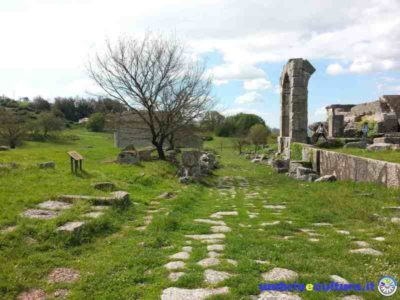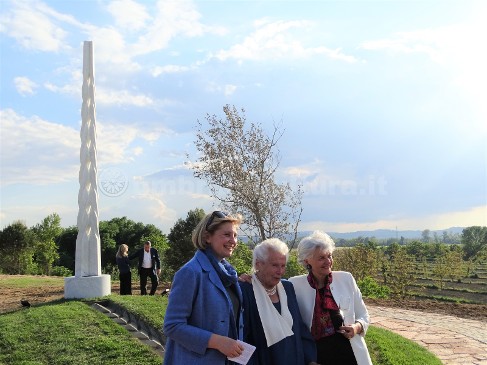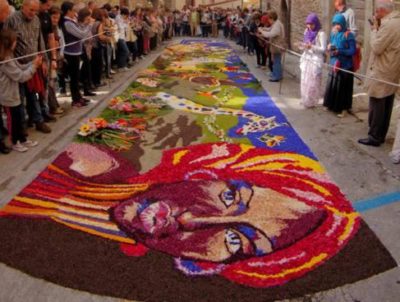On a wide plateau along the ancient Flaminia lies the ancient Roman town of Carsulae, not only an archaeological park, but a place where you can get in touch with nature, and be free to relax, play and learn.
This is the second life of the city of Carsulae. Built along the route of the Via Flaminia, it became economically important because of its strategic location. The Roman Town traces have no superstructure of later ages, having been abandoned, the only later construction is the Church of Saints Cosmas and Damian, of the eleventh century, built with recycled on site materials.
Despite the continuing dispossession suffered (because of the abandonment of the site) and the excavations carried out after the World War II, in Carsulae the structure of the area for public buildings (the Forum) is still visible. It’s possible to recognize the route of the Via Flaminia, which was the Cardo of the city, and the ruts of the wagons that crossed it; the bases of two twin temples, the Basilica, the amphitheater and the theater, as well as the arch of San Damiano (with three arches of which only the central one still stands up), that was the entrance to the city from the north side. Beyond it, monumental tombs are visible.
Carsulae was a rather rich city, regional center of commerce, and had public baths which are currently under excavation.
Why Carsulae was abandoned? Perhaps for earthquakes or a sinkhole that jeopardized the stability of the buildings. You can see that the paving stones of the decumano are vertical instead of horizontal, and the same trend of the decumano, not perpendicular to the Cardo, supports the idea that the area was plagued by geological problems which probably caused the abandonment of the site.
And how many inhabitants Carsulae had? There are still a lot of obscure points in the history of this site, in part because of the excavations conducted with wrong methods.
In the open warehouse the objects found during excavations are on display: stone materials such as capitals, architraves, and the famous “cippi carsulani”: travertine blocks originally placed in the ground to indicate the underlying presence of a tomb, with the typical decorations: the door, symbolizing the passage to the afterlife and the architectural shape of a temple.
In the warehouse is visible an ammonite, curious testimony of collecting during the era of ancient Rome, there are also several oil lamps, fine terracotta objects, bright red tableware.
Breathe the scents of the countryside, enjoy the scenery, take advantage of the beach chairs scattered around the site to read a book, listen to the silence, breathe peace, cross grazing sheep, living history, nature and art. This is Carsulae .
by Benedetta Tintillini
Find Carsulae on Google Maps:



